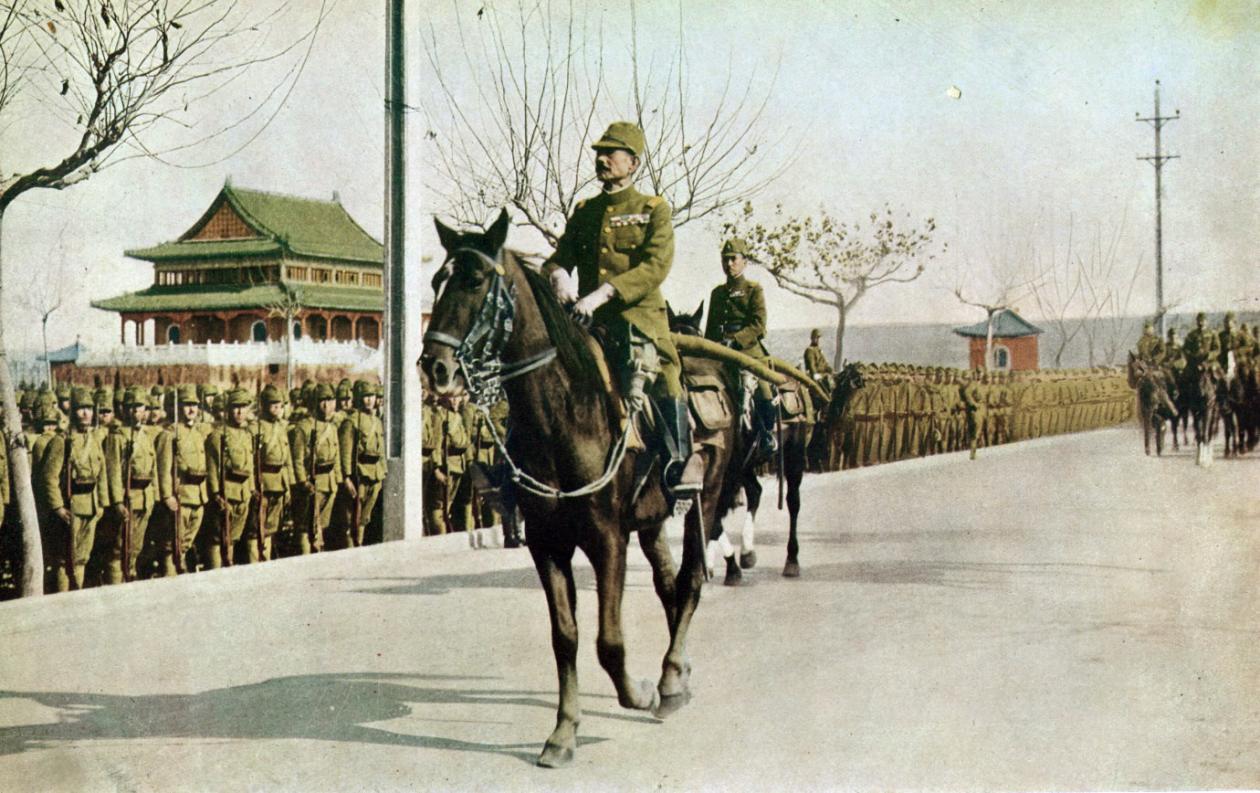The battle of China devoted all its strength to fighting Japan, causing “blood to flow into rivers”, 30,000 people lost their lives
Shanghai was the site of the first large-scale battle between the Japanese imperialists and the Chinese. In the end, China had to withdraw from Shanghai with irreplaceable losses at the divisional level.

Fighting took place on every street corner, house in Shanghai in 1937.
In the summer of 1937, Shanghai, also known as the Pearl of the East, became a bloody battlefield. 300,000 Japanese troops with the support of aircraft, warships, confronting 700,000 troops China led by Chiang Kai-shek, according to the National Interest.
The battle lasted for about 3 months with more than 300,000 dead. China’s most elite divisions faced many disadvantages when the Japanese had tanks, ships and aircraft to support them.
In China, only a few people remember the Battle of Shanghai, says Peter Harmsen, author of Shanghai 1937: Stalingrad on the Yangtze River. Historically, the battle was somewhat overshadowed by the Nanking massacre that was caused by the Japanese imperial army.
“Shanghai is one of the 22 major battles between Japan and China, which is mentioned in Chinese history,” Harmsen said in the US magazine War is Boring. “Many Chinese know about some of the battles, but only experts and historians can state where, when and why the battles took place.”
After the incident on the Marco Polo Bridge and in the context of the Chinese Communist Party’s army led by Mao Zedong being severely weakened, Chiang Kai-shek decided to open a big battle with the Japanese in Shanghai.
It’s not clear why Chiang Kai-shek chose Shanghai, Harmsen explained. “Perhaps Chiang wanted to show that the Chinese were willing to go all out against the Japanese.
“Shanghai was chosen as the battleground probably because it was home to a large number of foreigners living in China at that time,” Harmsen said. “This area with many rivers is also a disadvantage for Japanese tanks, rather than other open terrain in China.”
Initially, the Japanese did not really want to fight in Shanghai. Japan wanted to take the lands in the north first to capture important resources and also keep an eye on the Soviet Union.

Chiang Kai-shek was subjectively contemptuous of the enemy when he decided to fight the Japanese in Shanghai.
The Japanese Navy at that time was still quite modest, assigned the responsibility of keeping Shanghai. The assassination of a Japanese officer on August 9, 1937 in Shanghai in peacetime was a mere murder, but in wartime, it was a pretext to launch all-out war.
The Chinese army commanded by Chiang Kai-shek at that time had skilled divisions, trained in Germany, which was the pride of the ROC army. Chiang wanted to push the Japanese garrison in Shanghai down the Huangpu River.
But China lacks weapon heavy duty and experience using them in urban environments. The Japanese tried to resist, relying on naval and air support.
“From the first stage, the Chinese army dominated both in quantity and quality but still suffered heavy casualties. The list of the dead includes not only soldiers but also officers – who took years of training,” Harmsen wrote.
Referring to the battle of Shanghai, the memory mentioned is the image of “blood flowing into a river”. A Chinese division that entered the war in just two days was completely annihilated. New recruits who had just entered the army were taught how to hold a gun to launch into Shanghai.
After a month of fighting, Japanese reinforcements landed north of the city. The army went south, passing many villages and fortifications, opening the bloodline to Shanghai.
Despite strong support, the Japanese also suffered heavy losses. “The bodies of the dead were so scattered that they could not be cremated in time. Sometimes it’s just a hasty burial pit,” Harmsen said. “For an army in which the dead are honored more than the living, the battle of Shanghai took a great toll on the fighting spirit of the Japanese.”
The Japanese were completely surprised by how determined the Chinese were to fight. They waited for a quick win, but it turned out that it took more than 3 months.
In November 1937, the second wave of reinforcements landed south of Shanghai, tightening the siege and forcing Chiang Kai-shek to withdraw. There are no exact casualties on either side, but according to Harmsen, the Chinese estimate 187,000-300,000 soldiers on both sides were killed.

Japanese soldiers raise the flag after capturing Shanghai.
Japanese history books record 9,100 dead, but the Japanese death toll was much higher, according to various sources at 18,000 dead and 40,000 wounded.
Harmsen is the one who makes a comparison between the battle of Shanghai and the legendary battle at Stalingrad in World War II, because Japanese and Chinese soldiers also have to fight for every house and street corner in an urban combat environment.
Shanghai was also the site of a battle demonstrating the strength of the Japanese imperial army and the Chinese determination to resist on the other. Many Westerners present in Shanghai during this period witnessed the full intensity of the war.
In the end, on November 26, 1937, the Chinese army led by Chiang Kai-shek was completely defeated. The most skilled divisions suffered irreversible losses, paving the way for the Japanese to advance further into Chinese territory.
__________________
Successive defeats made China lose its advantage in its own territory and the only way to hold back the Japanese was to use the “sea of people” tactic. Invite readers to read the next long article to see how with a force 3 times larger than the enemy, how China fought.
at Blogtuan.info – Source: 24h.com.vn – Read the original article here



